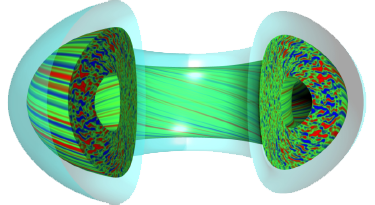Speaker
Description
E-mail:jxw19@mail.ustc.edu.cn
The mismatch of the operating parameters of the NBI (Neutral Beam Injector) ion source of the nuclear fusion experimental device will lead to the instability of the plasma in NBI ion source, and maybe cause breakdown in the ion source, which will limit the operation of the NBI long pulse and high power. At present, the main method to mitigate the equipment failure caused by the breakdown of the ion source is to add a snubber on the transmission line. However, a snubber can only mitigate the damage to the high-voltage power supply caused by the breakdown event to a certain extent, and the breakdown event damages the ion source itself and the electromagnetic interference caused by the breakdown event to other equipment, which are unavoidable. To stabilize the plasma in the NBI ion source of EAST (Experimental and Advanced Superconducting Tokamak), data from multiple rounds of experiments along with a priori information obtained from a predictive plasma model are used. For the problem of poor accuracy of the existing key-values extraction algorithms for experimental data, the OPTICS (Ordering Point To Identify the Cluster Structure) algorithm is used to improve the accuracy of the experimental data extraction, and provide a reference for the failure analysis during the experimental operation. A method based on SOM (Self-Organizing feature Map) and BP (Back Propagation) neural networks is adopted. By training historical data, the pulse width of the NBI ion source beam extraction process is estimated under given parameters to adjust the operating parameters. However, for some shots with normal parameters but breakdown events actually occurred, some distortions were observed in the diagnostic signals several milliseconds before the breakdown event. Using the method based on machine learning, some breakdown events have been successfully predicted. Although the success rate is not encouraging, it also provides a new method for the safe operation of the ion source. In the future, more efficient algorithms will be developed to apply to the breakdown prediction of CFETR-NNBI or other NBI facilities.
| Country or International Organisation | China |
|---|---|
| Affiliation | Institute of Plasma Physics, Hefei Institutes of Physical Science, Chinese Academy of Sciences |

